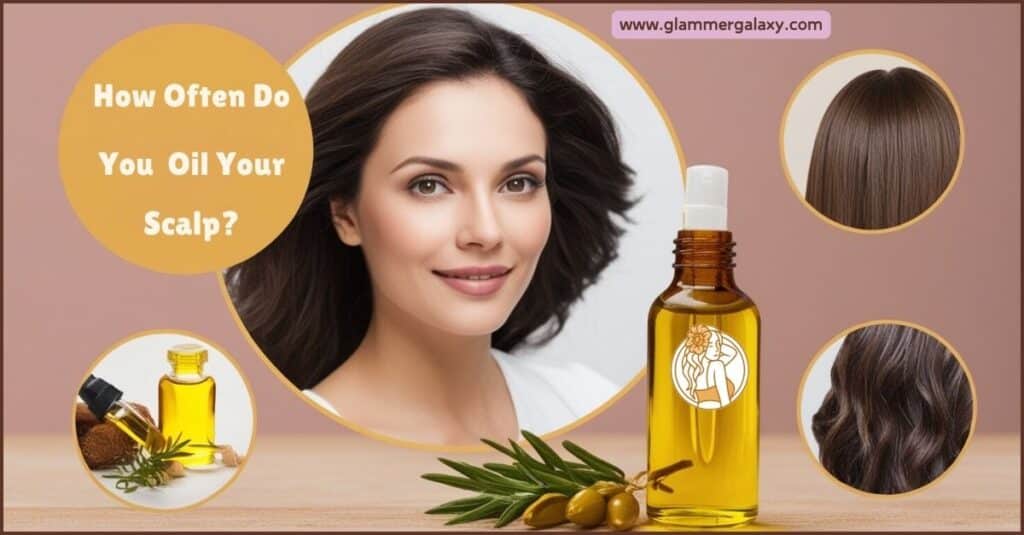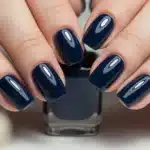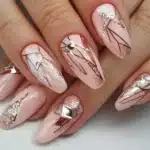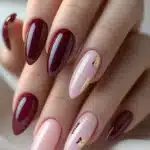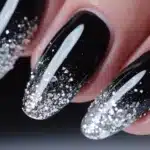In the world of hair care, scalp oiling has emerged as a game-changing practice for those seeking luscious locks and a healthy scalp. But how often should you oil your scalp, and what are the secrets to mastering this ancient technique?
Let’s dive deep into the world of scalp care and uncover the mysteries behind this transformative hair care ritual.
The Science of Scalp Oiling: More Than Just Moisture
Unraveling the Scalp’s Ecosystem
Your scalp is more than just the foundation for your hair; it’s a complex ecosystem teeming with life. Home to millions of microorganisms, your scalp plays a crucial role in maintaining hair health. Scalp oiling isn’t just about adding moisture; it’s about nurturing this delicate ecosystem.
The scalp’s microbiome consists of:
- Bacteria
- Fungi
- Mites
These microorganisms work in harmony to maintain scalp health. When this balance is disrupted, issues like dandruff, itchiness, and even hair loss can occur.
How Oils Interact with Your Scalp’s Natural Sebum
Sebum, the natural oil produced by your scalp, is essential for hair health. It acts as a natural conditioner and protectant for your hair and scalp. However, too much or too little sebum can lead to problems.
| Sebum Production | Effect on Scalp and Hair |
| Too little | Dry, itchy scalp; brittle hair |
| Balanced | Healthy, moisturized scalp and hair |
| Too much | Greasy hair; potential for clogged follicles |
Scalp oiling works in tandem with your natural sebum production. The right oils can:
- Supplement insufficient sebum production
- Help regulate overproduction of sebum
- Provide additional nutrients to the scalp
The Surprising Link Between Scalp Health and Hair Growth
Healthy hair starts with a healthy scalp. The condition of your scalp directly impacts the growth and quality of your hair. Here’s how:
- Hair follicle nourishment: A well-oiled scalp ensures that hair follicles receive the nutrients they need to produce strong, healthy hair.
- Improved blood circulation: Regular scalp massage during oiling increases blood flow to the hair follicles, promoting hair growth.
- Protection from environmental damage: Oils create a barrier on the scalp, shielding it from pollutants and UV rays.
“A healthy scalp is the foundation for healthy hair. Neglecting your scalp is like forgetting to water the roots of a plant.”
Decoding Your Scalp’s SOS Signals
Flakes, Itches, and Other Red Flags
Your scalp has ways of telling you when it needs attention. Common signs that your scalp might benefit from oiling include:
- Visible flakes or dandruff
- Persistent itchiness
- Tightness or discomfort
- Excessive oiliness or dryness
The Hidden Signs of an Unhappy Scalp
Some signs of scalp distress are less obvious but equally important:
- Hair texture changes: If your hair suddenly feels different, your scalp might be crying out for help.
- Increased hair fall: While some shedding is normal, a sudden increase could indicate scalp issues.
- Scalp odor: An unpleasant smell could signal an imbalance in your scalp’s microbiome.
- Scalp acne: Pimples on your scalp might indicate clogged follicles or an imbalance in oil production.
When Dryness Isn’t the Culprit: Other Scalp Conditions to Consider
While dryness is a common scalp issue, it’s not the only one. Other conditions that might benefit from scalp oiling include:
- Seborrheic dermatitis: A condition causing red, scaly patches
- Psoriasis: An autoimmune condition leading to thick, scaly patches
- Folliculitis: Inflammation of hair follicles
Always consult a dermatologist if you suspect a serious scalp condition.
Related Article : Does Black Hair Dye Damage Hair? Debunking the Myths
The Goldilocks Zone: Finding Your Perfect Oiling Frequency
Why One-Size-Fits-All Doesn’t Work for Scalp Care
Just as every person is unique, so is every scalp. Factors that influence your ideal oiling frequency include:
- Scalp type (oily, dry, combination)
- Hair texture
- Climate and environment
- Lifestyle factors (exercise frequency, exposure to pollutants)
- Existing scalp conditions
Mapping Your Scalp Type to Oiling Frequency
Use this guide to determine your starting point for scalp oiling frequency:
| Scalp Type | Recommended Oiling Frequency |
| Dry | 2-3 times per week |
| Normal | 1-2 times per week |
| Oily | Once a week or every 10 days |
Remember, these are general guidelines. Adjust based on your scalp’s response.
Seasonal Shifts: Adapting Your Routine Throughout the Year
Your scalp’s needs change with the seasons. Here’s how to adapt:
- Summer: Lighter oils, less frequent application
- Winter: Heavier oils, more frequent application
- Spring/Fall: Moderate approach, adjusting as needed
Oil Selection: A Treasure Trove of Options
Traditional Powerhouses: Coconut, Castor, and Jojoba Oils
These time-tested oils have proven benefits for scalp health:
- Coconut Oil:
- Rich in lauric acid
- Penetrates hair shaft
- Antibacterial properties
- Castor Oil:
- High in ricinoleic acid
- Promotes hair growth
- Balances scalp pH
- Jojoba Oil:
- Similar to human sebum
- Non-greasy feel
- Suitable for all scalp types
Emerging Stars: Marula, Argan, and Sea Buckthorn Oils
These newer entrants in the scalp care world offer unique benefits:
- Marula Oil: High in antioxidants, promotes collagen production
- Argan Oil: Rich in vitamin E, helps tame frizz
- Sea Buckthorn Oil: Packed with omega fatty acids, promotes scalp healing
DIY Blends: Crafting Your Custom Scalp Elixir
Create your own scalp oil blend tailored to your specific needs:
Dry Scalp Blend:
- 2 parts coconut oil
- 1 part castor oil
- 5 drops lavender essential oil
Oily Scalp Blend:
- 2 parts jojoba oil
- 1 part grapeseed oil
- 3 drops tea tree essential oil
Growth-Boosting Blend:
- 1 part castor oil
- 1 part peppermint oil
- 1 part rosemary oil
Mastering the Art of Scalp Oiling
Pre-Oiling Prep: Setting the Stage for Success
Before you begin your scalp oiling ritual, follow these steps:
- Brush your hair: Remove tangles and stimulate the scalp
- Section your hair: Divide into manageable sections for even application
- Warm the oil: Slightly warm oil absorbs better (but never hot!)
- Prepare your environment: Choose a comfortable spot with good lighting
The Fingertip Symphony: Perfecting Your Massage Technique
A proper scalp massage enhances the benefits of oiling:
- Start at the crown of your head
- Use firm, circular motions with your fingertips
- Work your way outward in a spiral pattern
- Pay extra attention to areas of concern (dry patches, itchy spots)
- Spend at least 5-10 minutes massaging
“The way you apply oil is just as important as the oil itself. A good scalp massage can make all the difference.” – Hair Care Specialist
Heat Therapy: When and How to Amp Up Oil Absorption
Heat can enhance oil absorption and provide additional benefits:
- Use a warm towel wrap after oiling
- Try a steamer or sit under a hooded dryer on low heat
- Leave the oil on overnight for deep penetration
Caution: Never use extreme heat, as it can damage your scalp and hair.
Navigating Common Pitfalls in Scalp Oiling
Over-Oiling: The Greasy Road to Scalp Suffocation
Too much of a good thing can be harmful. Signs of over-oiling include:
- Greasy, limp hair
- Clogged pores
- Scalp acne
- Increased dandruff
To avoid over-oiling:
- Start with small amounts of oil
- Focus on the scalp, not the hair length
- Adjust frequency based on your scalp’s response
Under-Oiling: Missing Out on Vital Nourishment
Not oiling enough can leave your scalp wanting. Signs of under-oiling:
- Persistent dryness
- Itchiness
- Flaking
- Dull, lifeless hair
To ensure adequate oiling:
- Be consistent with your routine
- Use enough oil to cover your entire scalp
- Don’t rush the application process
Product Buildup: The Silent Scalp Saboteur
Product buildup can negate the benefits of scalp oiling. To prevent this:
- Use a clarifying shampoo once a month
- Avoid applying oils to already oily hair
- Rinse thoroughly when washing out oils
- Consider a scalp scrub to remove dead skin cells and residue
See Also : Showering After an Ice Bath Myth or Necessity
The Cleansing Conundrum: Balancing Oils and Shampoo
Oil-Friendly Cleansing Methods
To maintain the benefits of scalp oiling while keeping your hair clean:
- Co-washing: Using conditioner to cleanse instead of shampoo
- Low-poo method: Using gentle, sulfate-free shampoos
- Oil cleansing method: Using oils to cleanse the scalp
The Pre-Shampoo Oiling Trick
Apply oil before shampooing for added benefits:
- Oil your scalp 30 minutes to 2 hours before washing
- Use a gentle shampoo to remove excess oil
- Follow with your regular conditioning routine
This method provides nourishment without leaving hair greasy.
Clarifying Treatments: When and How to Reset Your Scalp
Periodic deep cleansing helps maintain a healthy scalp:
- Use a clarifying shampoo once a month
- Try an apple cider vinegar rinse for natural clarifying
- Use a scalp scrub to remove buildup
Beyond Oiling: Holistic Approaches to Scalp Health
Diet and Hydration: Nourishing Your Scalp from Within
What you eat affects your scalp health. Include these in your diet:
- Omega-3 fatty acids (salmon, walnuts)
- Biotin (eggs, nuts, sweet potatoes)
- Vitamin E (almonds, spinach)
- Zinc (pumpkin seeds, beef)
Stay hydrated! Aim for at least 8 glasses of water daily.
Stress Management: The Mind-Scalp Connection
Stress can wreak havoc on your scalp. Try these stress-busting techniques:
- Meditation
- Yoga
- Regular exercise
- Adequate sleep (7-9 hours nightly)
Environmental Factors: Protecting Your Scalp from External Aggressors
Shield your scalp from environmental damage:
- Wear a hat in strong sunlight
- Use a silk pillowcase to reduce friction
- Avoid harsh chemical treatments
- Rinse hair after swimming in chlorinated water
Tailoring Your Scalp Oiling Ritual
Fine-Tuning Your Routine Based on Results
Keep a scalp care journal to track:
- Oil types used
- Frequency of application
- Scalp condition before and after oiling
- Any changes in hair texture or growth
Adjust your routine based on these observations.
Incorporating Scalp Oiling into Your Overall Hair Care Regimen
Create a comprehensive hair care routine:
- Weekly scalp oiling
- Daily gentle brushing
- Regular trims (every 6-8 weeks)
- Deep conditioning treatments
- Protective styling when needed
Tracking Progress: The Benefits of a Scalp Care Journal
A scalp care journal helps you:
- Identify patterns in scalp health
- Recognize effective treatments
- Stay consistent with your routine
- Motivate yourself by noting improvements
The Future of Scalp Care: Innovations on the Horizon
As we look towards the future of scalp care, exciting innovations are emerging that promise to revolutionize how we approach hair and scalp health. From cutting-edge ingredients to tech-driven solutions and eco-friendly options, the landscape of scalp care is evolving rapidly. Let’s explore these groundbreaking developments in detail.
Cutting-Edge Ingredients Making Waves in Scalp Health
The world of scalp care is witnessing a surge in novel ingredients that offer unique benefits. These innovative components are set to transform traditional hair care routines:
CBD Oil: The Anti-Inflammatory Powerhouse
CBD oil, derived from the cannabis plant, is making significant strides in scalp care:
- Anti-inflammatory properties: Helps reduce scalp irritation and redness
- Sebum regulation: May help balance oil production on the scalp
- Stress reduction: Can potentially mitigate stress-related hair loss
- Improved blood circulation: May enhance nutrient delivery to hair follicles
Peptides: The Growth Promoters
Peptides are short chains of amino acids that show promising results in hair care:
- Stimulate keratin production: Enhance hair strength and elasticity
- Promote hair growth: May activate dormant hair follicles
- Improve hair thickness: Can potentially increase the diameter of individual hair strands
- Extend hair growth phase: May prolong the anagen (growth) phase of the hair cycle
Probiotics: Balancing the Scalp Microbiome
Probiotics are beneficial bacteria that can positively impact scalp health:
- Microbiome balance: Help maintain a healthy scalp ecosystem
- Dandruff reduction: May combat the fungus responsible for dandruff
- Strengthen skin barrier: Enhance the scalp’s natural defense mechanisms
- Reduce inflammation: Can potentially alleviate scalp irritation and redness
Plant Stem Cells: Rejuvenating Hair Follicles
Plant stem cells offer innovative possibilities for scalp and hair rejuvenation:
- Cellular regeneration: May stimulate the renewal of scalp cells
- Antioxidant properties: Protect hair follicles from oxidative stress
- Enhance hair follicle longevity: Potentially delay hair aging processes
- Improve hair density: May increase the number of active hair follicles
You May Also Enjoy:
Tech-Driven Solutions for Personalized Scalp Analysis
Technology is playing an increasingly important role in scalp care, offering personalized solutions:
AI-Powered Scalp Analysis Tools
Artificial Intelligence is revolutionizing scalp assessment:
- Real-time analysis: Instant evaluation of scalp conditions
- Personalized recommendations: AI-generated treatment plans based on individual scalp needs
- Progress tracking: Monitor changes in scalp health over time
- Early detection: Identify potential scalp issues before they become severe
At-Home Microscopic Scalp Cameras
Advanced imaging technology is now accessible for home use:
- High-resolution imaging: Detailed view of the scalp and hair follicles
- User-friendly interfaces: Easy-to-use apps for interpreting results
- Regular monitoring: Track scalp changes without frequent salon visits
- Educational tool: Helps users understand their unique scalp conditions
Customized Hair Care Formulations Based on DNA Testing
Genetic analysis is paving the way for truly personalized hair care:
- DNA-based product recommendations: Tailored suggestions based on genetic predispositions
- Targeted treatments: Address specific genetic hair and scalp concerns
- Predictive care: Anticipate future hair issues based on genetic markers
- Optimized ingredient selection: Choose the most effective components for individual needs
Sustainable Scalp Care: Eco-Friendly Options Gaining Traction
The future of scalp care is increasingly focused on sustainability and environmental responsibility:
Waterless Shampoo Formulas
Innovative waterless products are addressing environmental concerns:
- Water conservation: Reduce water usage in hair care routines
- Concentrated formulas: Less packaging and transportation footprint
- Travel-friendly: Convenient for on-the-go use
- Extended shelf life: Reduce product waste due to spoilage
Biodegradable Packaging
Eco-conscious packaging solutions are becoming more prevalent:
- Compostable materials: Packaging that breaks down naturally
- Plastic-free alternatives: Use of materials like bamboo, glass, or recycled paper
- Refillable containers: Reduce single-use packaging waste
- Ocean-safe materials: Prevent contribution to marine pollution
Sustainably Sourced Natural Ingredients
Ethical sourcing practices are gaining importance in scalp care products:
- Fair trade partnerships: Support ethical farming practices
- Organic cultivation: Minimize environmental impact of ingredient production
- Upcycled ingredients: Utilize byproducts from other industries
- Local sourcing: Reduce carbon footprint associated with transportation
Zero-Waste Hair Care Products
The concept of zero waste is extending to hair and scalp care:
- Solid shampoo and conditioner bars: Eliminate the need for plastic bottles
- Multi-use products: Reduce the number of items needed in hair care routines
- Recyclable or reusable packaging: Minimize waste sent to landfills
- Bulk refill options: Allow consumers to reuse containers
As we move forward, these innovations in ingredients, technology, and sustainability are set to transform the way we care for our scalps and hair. By embracing these advancements, we can look forward to more effective, personalized, and environmentally responsible scalp care routines. The future of scalp health is not just about achieving beautiful hair, but also about promoting overall well-being and environmental stewardship.
You May Also Enjoy Reading: Does Shea Butter Expire? Keep It Lush!
Case Studies: Real-Life Scalp Oiling Success Stories
Case Study 1: Sarah’s Dry Scalp Transformation
Sarah, a 32-year-old office worker, struggled with a persistently dry, itchy scalp for years. After implementing a twice-weekly scalp oiling routine with a blend of coconut and jojoba oils, she saw significant improvements within a month.
Results:
- 80% reduction in scalp flaking
- Complete elimination of itchiness
- Increased hair shine and manageability
Case Study 2: Mike’s Hair Growth Journey
Mike, a 45-year-old man experiencing early-stage hair thinning, incorporated a weekly scalp oiling routine using a castor oil and peppermint oil blend.
Results after 6 months:
- 30% increase in hair density
- Improved scalp circulation
- Reduced hair fall during washing
Case Study 3: Lisa’s Oily Scalp Management
Lisa, a 28-year-old with naturally oily hair, was skeptical about scalp oiling. She tried a lightweight jojoba oil treatment once every 10 days.
Results:
- Balanced sebum production
- Reduced need for frequent washing
- Improved overall hair texture
Expert Tips for Maximizing Your Scalp Oiling Results
- Consistency is key: Stick to your routine for at least 3 months to see significant results.
- Quality matters: Invest in high-quality, pure oils for best results.
- Less is more: Start with small amounts of oil and increase as needed.
- Timing is everything: Experiment with leaving the oil on for different durations to find what works best for you.
- Listen to your scalp: Pay attention to how your scalp responds and adjust accordingly.
Frequently Asked Questions About Scalp Oiling
Q: Can scalp oiling cause hair loss? A: When done correctly, scalp oiling should not cause hair loss. In fact, it can help strengthen hair and reduce breakage.
Q: Is scalp oiling suitable for all hair types? A: Yes, but the frequency and type of oil may vary depending on your hair texture and scalp condition.
Q: Can I oil my scalp if I have dandruff? A: Yes, certain oils like tea tree and neem oil can actually help combat dandruff. However, consult a dermatologist for severe cases.
Conclusion: Embracing the Power of Scalp Oiling
Scalp oiling is more than just a hair care trend; it’s a time-tested practice with numerous benefits for both your scalp and hair. By understanding your scalp’s unique needs, choosing the right oils, and mastering the application technique, you can unlock the secrets to a healthy scalp and beautiful hair.
Remember, consistency is key, and patience is your ally in this journey to scalp health. Embrace the art of scalp oiling, and watch your hair transform! Whether you’re battling dryness, promoting growth, or simply maintaining healthy locks, regular scalp oiling can be a game-changer in your hair care routine.

Sarah Williams is an experienced blogger and fashion enthusiast at Glammer Galaxy. With a passion for beauty and style, she shares expert insights on hair trends, nail art, and fashion tips. Her creative flair and years of experience make her a go-to source for all things glam!

